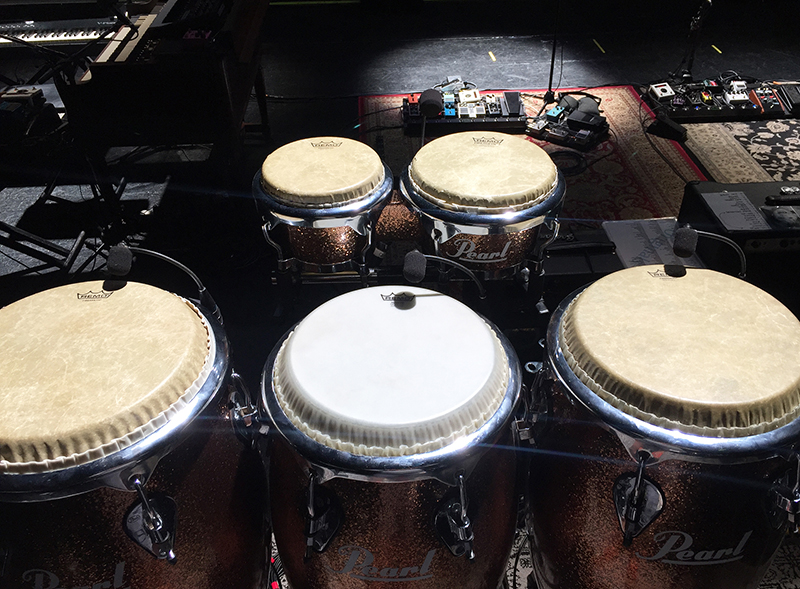Many musical genres feature extra percussion in addition to beats provided by a drummer on a trap kit, and adding a percussionist to the line-up creates a separate and distinct new level of rhythmic depth to a band’s sound. From reggae to world beat, rock ‘n’ roll to bluegrass, an extra drummer can add texture, syncopation, atmosphere, special effects and much more.
The incredible diversity of instrumentation available to the modern percussionist produces a wildly variable range of volumes, tones and dynamics. Figuring out how to fit these instruments into the mix is a challenge that begins with microphone placement, then the proper use of dynamics, equalization (if needed) and panning.
While some percussion rigs may only consist of a few hand drums and a shaker, others are much larger and more complicated. The largest I’ve mixed was 34 drums across 28 channels.
When mixing these larger percussion rigs, I separate the whole rig into groups of similar instruments that the percussionist plays as subsections. For example, Andy Farag (percussionist for Umphrey’s McGee, the band I work with) has his congas and bongos arranged on the downstage edge of his riser. I consider that the hand drum section. His stage right side has a pair of timbales, a few wood blocks, cowbells and small cymbals. That’s the timbale section.
The upstage side has two parts. The tom tom section is made up of three octobans, three concert toms and a floor tom, while the stage left side is the toy section – bells, chimes, cymbals, tambourines, shakers and the like, with a chime tree on the outside edge. Keep this setup in mind as it will be the working example for the following techniques.
Placement Issues
Before dynamics, equalization and panning come into play, proper microphone placement is crucial. I utilize a combination of close, internal and overhead miking to build a sonic image of the whole percussion kit.
Close miking is very helpful in providing isolation, but it provides limited reproduction of the instrument’s tone. Snare drums are a great example: if only miked very closely from the top, the sound of the wire snares on the bottom may not get picked up by that mic. Hence the common use of snare bottom mics.
In addition, I use Earthworks DP30C condensers to close-mic Andy’s congas and bongos. The cardioid pattern provides great tone and isolation because hand drums produce most of their harmonic complexity near the top head.
While internal miking has become less common as mic patterns have tightened up over the years, I’ve found that some drums with just a top head, like octobons and toms, benefit from the practice because it provides lots of isolation from the surrounding drums. I deploy Audix D3s and D4s inside Andy’s octobans, usually reversing the polarity on these channel strips to compensate for the mic’s position on the opposite side of the drum head.

Overhead miking can help foster a more cohesive sound when many things occupy a small space. But that advantage often comes at the expense of bleed from other loud things around the overhead, such as guitar amps or stage monitors. I employ a single Earthworks SR78 hypercardioid condenser as an overhead over Andy’s timbale section. Timbales are loud and translate well with the mic positioned about 36 inches above the instrument, with the hypercardioid pattern helping to reject the loud drum kit and guitar amp nearby.


















